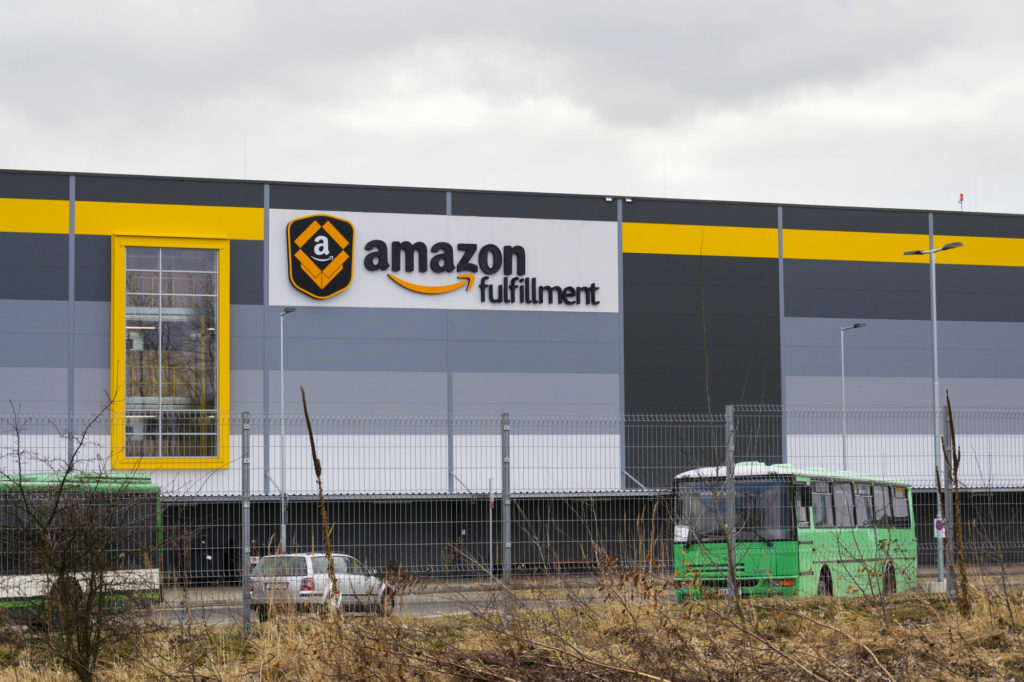Speculation is rife that Amazon UK is interested in taking on some Homebase stores and converting them into local fulfilment centers. What is driving Amazon’s interest? Marek Różycki (Last Mile Experts) and Ian Kerr (Postal Hub Podcast) analyze why Amazon might consider this move and what it means for the last mile.
The big-box DIY/gardening retailer Homebase in the UK is in financial strife, closing 42 of its 250 stores as it restructures in an effort to cut costs. It is is also trying to negotiate lower rent deals with landlords, and failure to do so could put up to 70 more stores at risk. Amazon is reportedly keen to snap up some of the sites vacated by Homebase, and these handily-situated venues could become Prime Now fulfilment centers.
Close to the consumer
In the USA, Amazon has abandoned its earlier policy of siting central fulfilment centers in states with low taxes. With the advent of same-day delivery, it is working toward a distributed fulfilment center network supported by bricks and mortar retail outlets, with the aim of having products warehoused as close to the consumer as possible. This means Amazon can offer same-day services and a better customer experience.
In the UK, Amazon has been pursuing a similar policy. Prior to the Homebase rumors, Amazon had reportedly planned to open UK fulfilment centers in four major regional cities.
An expansion of Prime Now?
Could Amazon be planning to expand Prime Now to more parts of the UK? This wouldn’t be a surprise as it is arguably the main catalyst for super fast delivery in this market. It may also have implications for pantry and potentially fresh – subject to chill chain requirements – products which also require localized stock locations.
Cost of warehousing
Why would Amazon seek to buy the Homebase stores rather than go for purpose-built locations? The reason is the massive shortage of suitable warehouse space in the UK.
According to recent data from commercial real estate services and investment firm CBRE, the online shopping boom has contributed to a near doubling in demand for warehouse space over the past 10 years. Retail now dominates, accounting for 60% of warehouse space, up from about 30% a decade ago.
The East Midlands is at the center of this boom, being a hub for major motorways and rail connections. From here, goods can reach almost all of the population in England and Wales within four to five hours.
Most important parcel carriers have hubs in or nearby this area. DPD has its ‘super hub’ in this area, which is the size of 19 full sized football pitches and was built at a cost of £100m (US$128m) in 2015. This has been overtaken by the new £150m (US$192m) DHL Express site.
Construction of 11 huge warehouse units is underway at the East Midlands Gateway, which will serve names such as Amazon, Shop Direct and Nestlé and create some 7,000 jobs.
What’s next?
The boom in demand for warehouse space contrasts starkly with gloom on the high street. The shift is largely down to consumers themselves, who have chosen to spend more of their money online, so there would be some irony if an online giant like Amazon snaps up Homebase’s retail sites.
Some 20% of retail sales are now made online or via mobile and that figure can only grow. Our take on this is that demand for stock locations near urban areas and in strategic locations for hubs will only grow. This is creating a real challenge for operators and only those who are creative – like Amazon – will win.
Bios:

Marek Różycki is managing partner at Last Mile Experts, specializing in CEP and e-commerce last-mile advisory.

Ian Kerr is the founder and host of the Postal Hub Podcast, the weekly podcast for the postal and delivery sectors.


